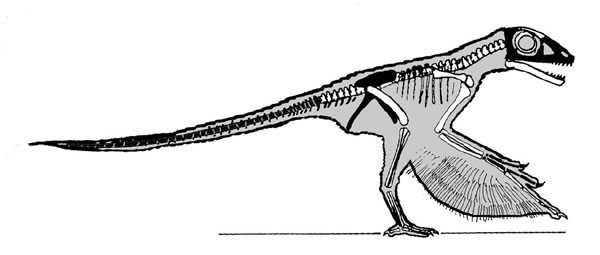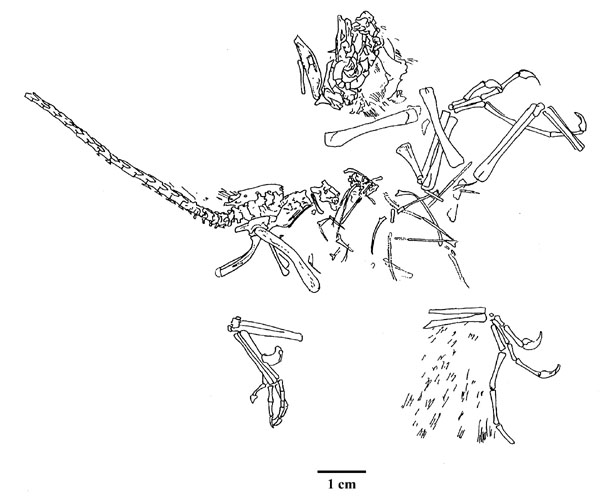
Holotype: CAGS02-IG-gausa-1/DM 607 (part and counterpart)
Locality: Daohugou, Ningcheng County, East of Nei Mongol, Inner Mongolia.
Horizon: Jiulongshan Formation (Daohugou Formation?).
Biostratigraphy:
Age: Upper Bathonian Stage, upper middle Dogger Epoch, Middle Jurassic.
Note: Originally listed as the following Locality: Dawangzhanzi fossil site, Lingyuan City, Western Liaoning Province, China.
Horizon: Basal part of the Yixian Formation.
Biostratigraphy:
Age: Lower Barremian Stage, Gallic Subepoch, Early Cretaceous Epoch, Early Cretaceous.
Material: Fragmentary skull (posterior half of the skull and lower jaws), and fragmentary skeleton with impressions of down-like feathers impressions as well as a patch of tubercles tentatively identified as scaly skin.

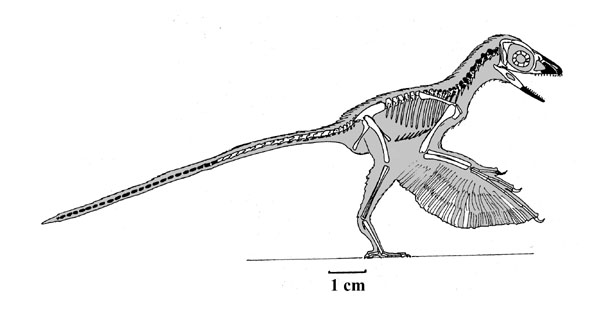

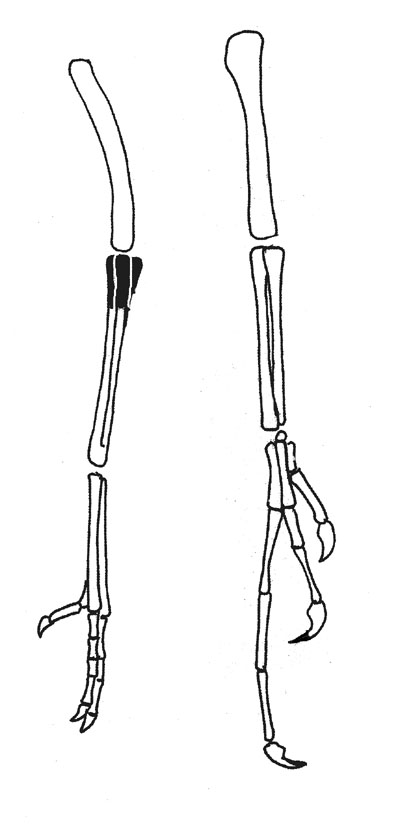
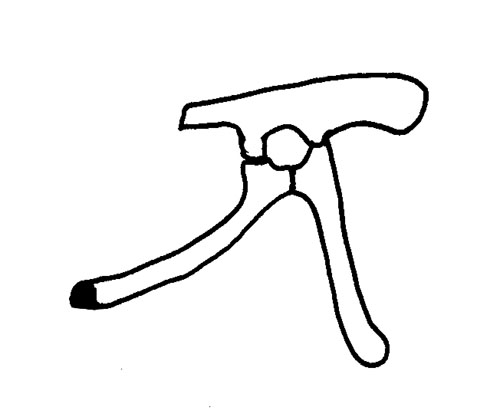
Referred material:
= Epidendrosaurus ningchengensis ZHANG, ZHOU, XU & WANG, 2002
Etymology: In reference to the locality Ningcheng County of Nei Mongol.Holotype: IVPP V12653
Locality: Daohugou, Ningcheng County, East of Nei Mongol, Inner Mongolia.
Horizon: Jiulongshan Formation.
Biostratigraphy:
Age: Upper Bathonian Stage, upper middle Dogger Epoch, Middle Jurassic.
Material: Fragmentary skull and fragmentary skeleton.
